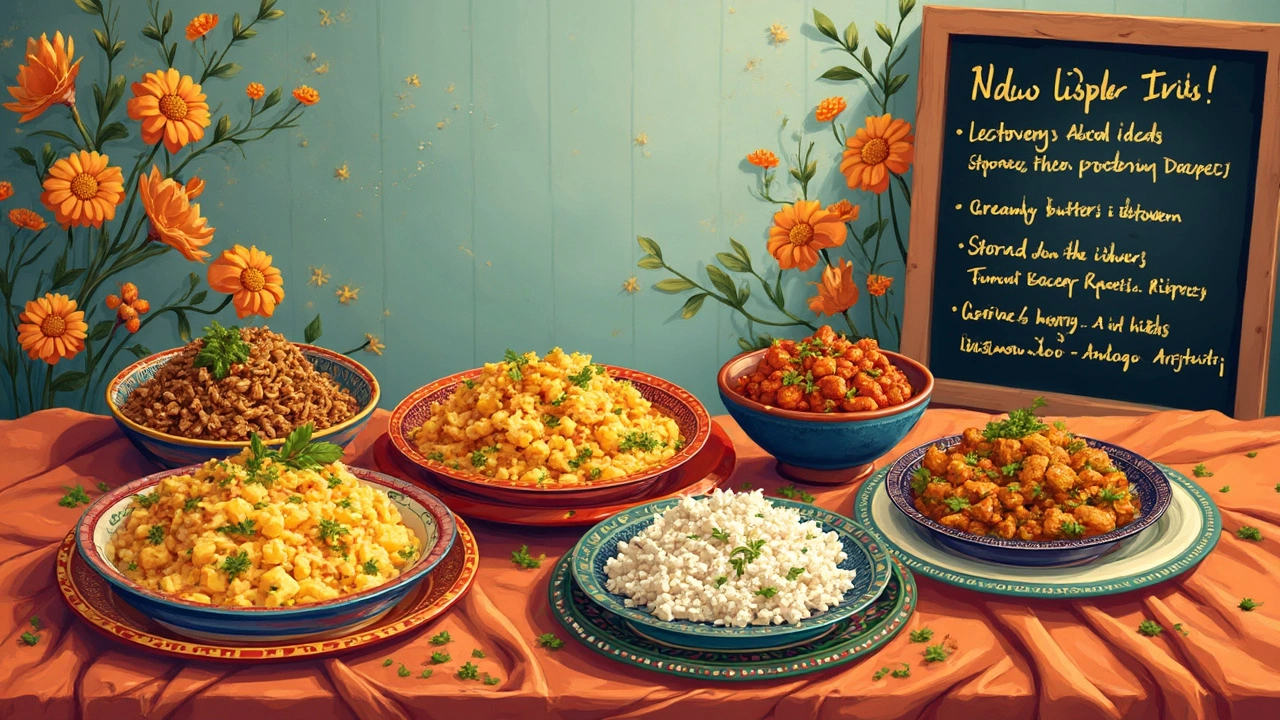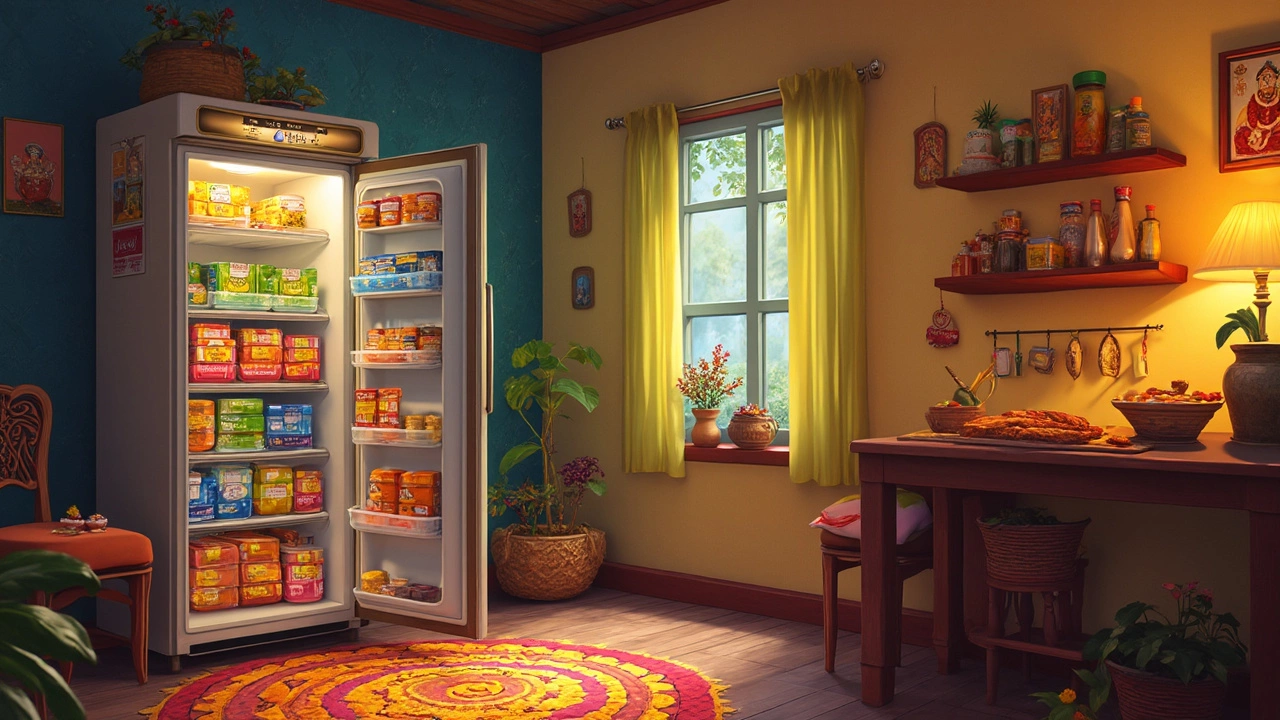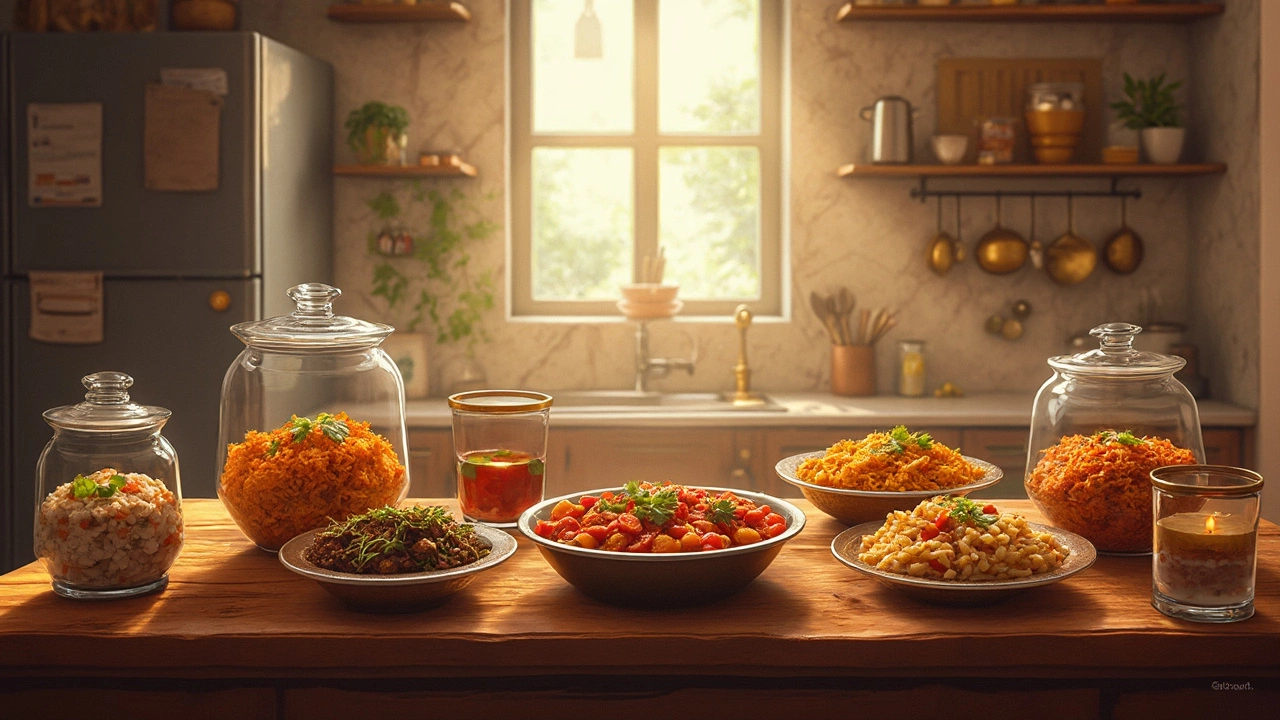We've all been there—leftover Indian food staring back at us from the fridge, calling us with its tempting aroma. But how long is it safe to nibble on that biryani or those gulab jamuns? Here's what you need to know to keep enjoying your Indian leftovers without a worry.
First off, let's talk shelf life. Just like with any cuisine, the freshness of Indian food varies. Typically, most cooked Indian dishes will last about 3 to 4 days in the fridge. But let's get specific and delve into some popular options.
Curry, a staple for many, fits snugly in that 3 to 4-day window if stored properly in an airtight container. The spices sometimes even deepen in flavor, making reheated servings especially delightful. But don't push it beyond this time frame—you want flavor, not food poisoning!
- Understanding Shelf Life: The Basics
- Popular Indian Dishes and Their Fridge Lifespan
- Tips for Extending Freshness
- Recognizing Signs of Spoilage
- Safe Reheating Practices
Understanding Shelf Life: The Basics
So, you're staring at your leftover Indian food and wondering when it might start plotting against you. Figuring out how long food lasts in the fridge can feel like solving a mystery, but it really comes down to some straightforward stuff.
The general rule of thumb for most Indian cuisine leftovers is they should be fine for about 3 to 4 days when stored in an airtight container in the fridge. This rule applies to your go-to curries, savory lentil dishes like dal, and hearty biryanis. The key here is the airtight part—it keeps the moisture in and the bacteria out.
Speaking of bacteria, here's a fun fact: they thrive between 40°F and 140°F, which is basically room temperature vibes. So, the fridge—a solid 35°F to 38°F—is your best buddy to keep those nasties at bay. Make sure your fridge is cold enough, or those leftovers might turn faster than you can say "naan."
Worried about sweets? Indian treats like gulab jamun or jalebi might have a little more leeway because of their sugar content, but it's still best not to stretch it past a week. Always check their texture and smell—if it seems off, it probably is.
A little attention to how you store your food goes a long way. Fridge organization can also help; keep leftovers on a designated shelf, so nothing’s hiding at the back to surprise you in the next fridge clean-out.
Popular Indian Dishes and Their Fridge Lifespan
Diving into the colorful world of leftover Indian food, it's crucial to know how long you can safely keep your favorites without risking a stomachache. Each dish, with its unique ingredients, has its own timeline. Let's break down some fan favorites.
Biryani: This beloved rice dish, rich in spices and often loaded with chicken or veggies, tends to last about 3 to 4 days in the fridge. Keep it in a sealed container, and reheat thoroughly before devouring.
Butter Chicken: This creamy tomato-based curry is a classic. You can safely enjoy it for up to 3 days if you keep it chilled properly.
Samosas: While fresh ones are hard to beat, leftover samosas can be stored in the fridge for about 2 days. Pop them in the oven for a quick reheat to get them crispy again.
Paneer Tikka: This vegetarian favorite lasts about 2 to 3 days. Its marinade will keep those flavors consistent but check for any off smells before reheating.
Here's a quick glance at some storage timelines:
| Dish | Duration in Fridge |
|---|---|
| Chicken Curry | 3-4 Days |
| Paneer Butter Masala | 3 Days |
| Naan Bread | 2-3 Days |
| Gulab Jamun | 7 Days |
Of course, the trick with any of these is more in how they're stored and reheated. Using airtight containers and reheating thoroughly will stretch that freshness and keep those flavors popping. Now, go indulge without worries, knowing your leftovers are safe and scrumptious!

Tips for Extending Freshness
So, you've got some delicious leftover Indian food and you want it to last longer. Here are some solid tips to make sure your favorites stay fresh and tasty.
First things first, get that food into the fridge ASAP! Leaving it out too long is a no-no. Experts say you should aim to refrigerate within two hours after cooking. If you want to go by the book, Julia Melvin, a food safety specialist, once said, "Food safety is no accident, it starts with controlling temperatures from the get-go."
Next up, storage-wise, airtight containers are your best friend. They help keep the food's moisture in and curious fridge odors out, ensuring your Indian cuisine tastes its best when you're ready to dig in again. Plus, clear containers let you see what's inside without a mystery opening-and-sniff situation.
Did you know certain dishes freeze better than others? Gravies and curries with rich sauces often hold up well in the freezer for up to three months. However, items like fried samosas might get a bit soggy after being frozen and reheated. Consider wrapping these trickier items in foil before tossing them in a container for added texture protection.
- Portioning is key - Divide large batches into individual servings before you store. That way, you'll only thaw and reheat what you need.
- Label the containers with dates - Keep track of how long they've been chilling in the fridge or freezer.
- Herbs and spices can be freshened up when reheating - A sprinkle of fresh cilantro or a dash of garam masala works wonders when serving.
Proper storage isn't just about making things last; it's about keeping that burst of flavor alive, too. Stick with these tips, and your leftovers will always be a delicious second act.
Recognizing Signs of Spoilage
No one likes to throw away tasty leftover Indian food, but safety comes first. Knowing how to spot when your food has gone south can save you from a nasty stomach ache. So, what should you look for?
First, trust your nose. Any strange or sour smell is a big red flag. Indian dishes pack a punch when it comes to aroma, so if anything smells off or less fragrant, it's probably time to say goodbye.
Then, take a peek at the surface. Look for any signs of mold. Indian cuisine sometimes has a lot of color, which can mask mold spores. Check carefully around the edges and on top.
Don't forget texture. If your curry is suddenly thicker or your sweets are slimy, it's not worth the risk. Textural changes often mean bacteria have started to change the food's consistency.
- Off smell: sour or less aromatic.
- Mold: especially around the edges.
- Texture changes: thicker or slimy consistency.
Lastly, put your leftovers to the test! If you notice any of these things, better to be safe than sorry and dispose of it. Keeping these tips in mind ensures you enjoy your Indian sweet treats and meals without any hitches.

Safe Reheating Practices
Okay, so you've got some leftover Indian food waiting patiently in the fridge, and it's time to bring those flavors back to life! Reheating properly is key—nobody wants to end up with soggy samosas or dried-out dal. Let's look at some simple tips to ensure your next meal is as good as the first.
First thing first, regardless of the method, make sure the food reaches 165°F (74°C) to kill any potential bacteria. This is the sweet spot for safe eating. Got a trusty food thermometer? Now's the time to use it.
When reheating Indian cuisine in the microwave, stir the food midway through. This helps heat it evenly. Nobody likes biting into a cold patch of rice, right? Also, a splash of water can work wonders to maintain moisture, especially with dishes like biryani or pulao.
If you’ve got time, the stovetop is a fantastic option for curries and gravies. Use a low to medium flame, cover your pan to trap the heat, and give it a quick stir every now and then. Your leftover Indian food will taste fresh and just as flavorful.
For crispy items like pakoras or samosas, the oven will be your best friend. Preheat to 350°F (175°C), arrange them on a baking tray, and after 10-15 minutes, they should regain their crunchy glory.
And hey, while you're at it, be extra cautious with seafood dishes. They can be a bit finicky and may not last as long as other dishes. Be sure they’re heated thoroughly to avoid any unwelcome surprises.
